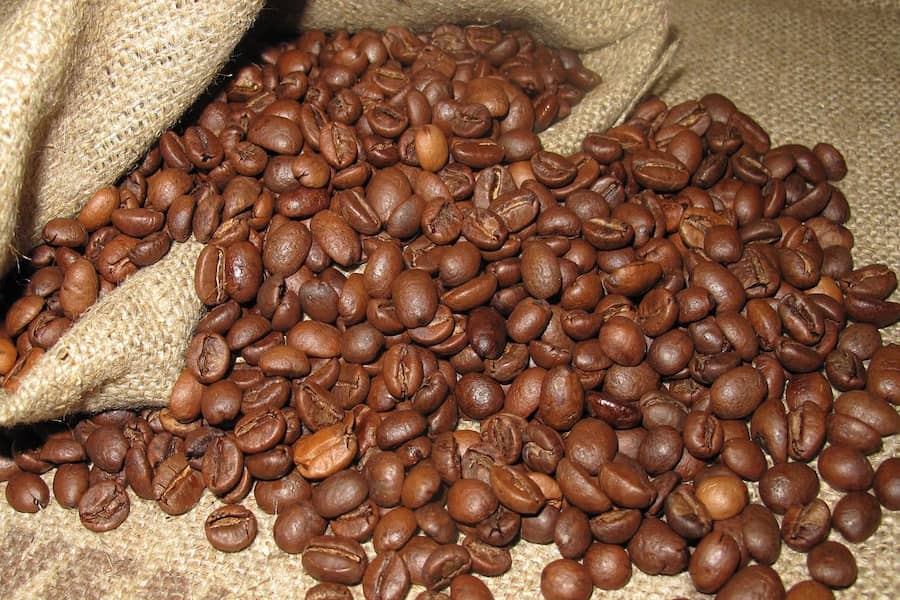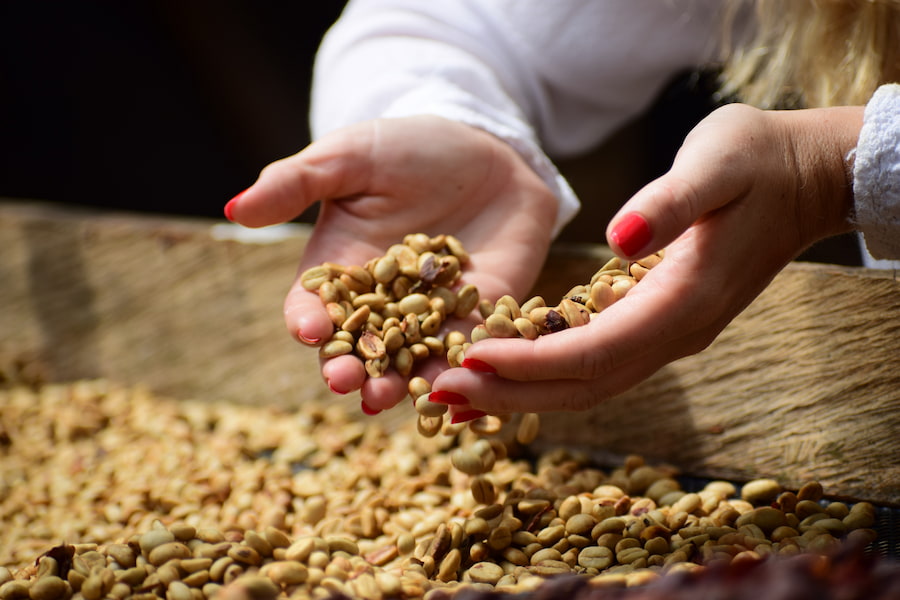Have you ever roasted your coffee and found that it became oily? This can be a real problem, as the oil will make it difficult to grind, and it can ruin your coffee maker. I will show you how to dry oily coffee beans so that you can enjoy a great cup of java anytime.
Contents
How to Dry Oily Coffee Beans
When it comes to drying oily coffee beans, you can’t really fully dry them. They release oil with time through oxidation. This naturally occurring process is what causes your cup joe to taste better with age.
Washing coffee beans to remove the oil will make them stale, thus losing their rich flavor. Leaving them to dry in the air further speeds up the oxidation process. However, here are two methods you can use to remove as much oil as possible.

Using a Paper Towel
Sandwiching beans in layers of paper towels is a simple way of drying oil. In this method, the trick is to cover them as much as possible to reduce their exposure to air.
- The first step in keeping your beans oil-free is to store them in a dark spot away from direct sunlight since it alters the flavors, leaving them bland.
- Now, stack two or three layers of tissues on a flat surface. The coffee beans should be equally distributed on the surface. Two to three sheets should be enough to cover them completely.
- With your hands, pat the beans. The tissue will absorb the oil.
- Replace the used with clean paper towels after it has become greasy. Repeat steps 2-3 as needed until most of the oil is dried.
Benefits of Using a Paper Towel
This method will absorb any excess oil, preventing them from drying out too slowly or unevenly. It will leave some oil that contributes to the overall development of crema and flavor of your java.
Paper towels will not leave any lint or residue, unlike other materials. They are also lightweight and easy to store, making them ideal for those who have limited space.
Paper towels are readily available in most kitchens. Therefore, this is also a relatively quick and simple method, making it a great option for those who are short on time.
Drawbacks of Using a Paper Towel
It can absorb flavor, which may not be ideal for those who want their java to retain its natural flavor. Paper towels aren’t environmentally friendly and are wasteful. Therefore this method is not recommended for those trying to avoid waste.
Additionally, it may not be convenient for large quantities, as it may take longer to dry them. Finally, paper towels may be unsuitable for those who avoid using chemicals, as they may contain chemicals that could transfer to your coffee.
Using a Colander
Since this second method requires a source of heat, it is best to use a metal colander. One of the main disadvantages to using plastic colanders is that they can melt and warp after being exposed to high temperatures (especially above 150 degrees Fahrenheit).
Plus, over time, plastic colanders will develop a bad smell or odor as well. On the other side, silicone colanders also don’t stand high temperatures extremely well. They are also not as durable as aluminum or steel.
- Preheat your oven to 450 degrees Fahrenheit while preparing your java for baking.
- Cover the baking sheet with a single layer of coffee. They should be close together without overlapping in any way.
- Place the baking sheet in the center of the oven. Roast for 15 to 20 minutes, paying attention to the cracking of the beans. You should also stir every few minutes to prevent uneven roasting.
- Remove the dish from the oven after your coffee has reached the appropriate color. Fill a metal colander halfway with the coffee.
- The coffee will cool, and the oil will be removed if you stir them around in the colander.
- After cooling in the colander, your beans will need to rest for around 12 hours to cool and remove carbon dioxide gases. This is because the coffee bean contains carbon dioxide that must be released before being stored in an airtight container.
- You can test to see if they are ready by taking a small handful out of the container and rolling them around in your hand. If they do not break, then they are ready to be stored.
If you want to remove all of the oil, you can repeat this process.

Benefits of Using a Colander
A colander is less likely to cause static build-up than other methods, such as using a towel. It will also dry more evenly than a paper towel.
Drawbacks of Using a Colander
The holes in the colander are large enough that many of the smaller coffee will fall through. This is not a big deal if you are just trying to dry the beans quickly. However, it can be a problem if you want to preserve as much of the java as possible.
A colander is also not very portable. If you are trying to dry your beans while traveling, it can be difficult to find a place to set up the colander and allow the java to dry properly.
Lastly, a colander does not offer much protection from the elements. If it is windy or dusty outside, your coffee will likely be contaminated by whatever is in the air.
What Causes Coffee Beans to Be Oily?
Lipids, carbs, caffeine, water, and sugars make up the natural composition of the coffee cherry. All of these chemicals respond differently when the beans are cooked. As pressure builds, the bean becomes a different hue.
The caramelization of the sugars improves the taste of the bean. Roasters will remove the beans at this point for a light or medium roast, depending on the roast type. If they choose a darker roast, though, the process continues.
In the form of oil, the lipids reach the surface at this moment. This is a glossy, sticky covering on the bean that I recognize, sometimes called “oily beans.” The difficulty in grinding and brewing necessitates one to know how to dry oily them.
Are Oily Beans Bad?
No, oily beans aren’t bad. The top concern with using oily beans is the damage they cause to automatic or semi-automatic coffee-making machines. To reduce this, use a burr grinder because it is relatively easy to clean and doesn’t over-grind.
Conclusion
Knowing how to dry oily coffee beans is essential. The natural oils cause oil to come to the surface during the roasting process. If your beans become oily, you can dry them using a colander or paper towel.


